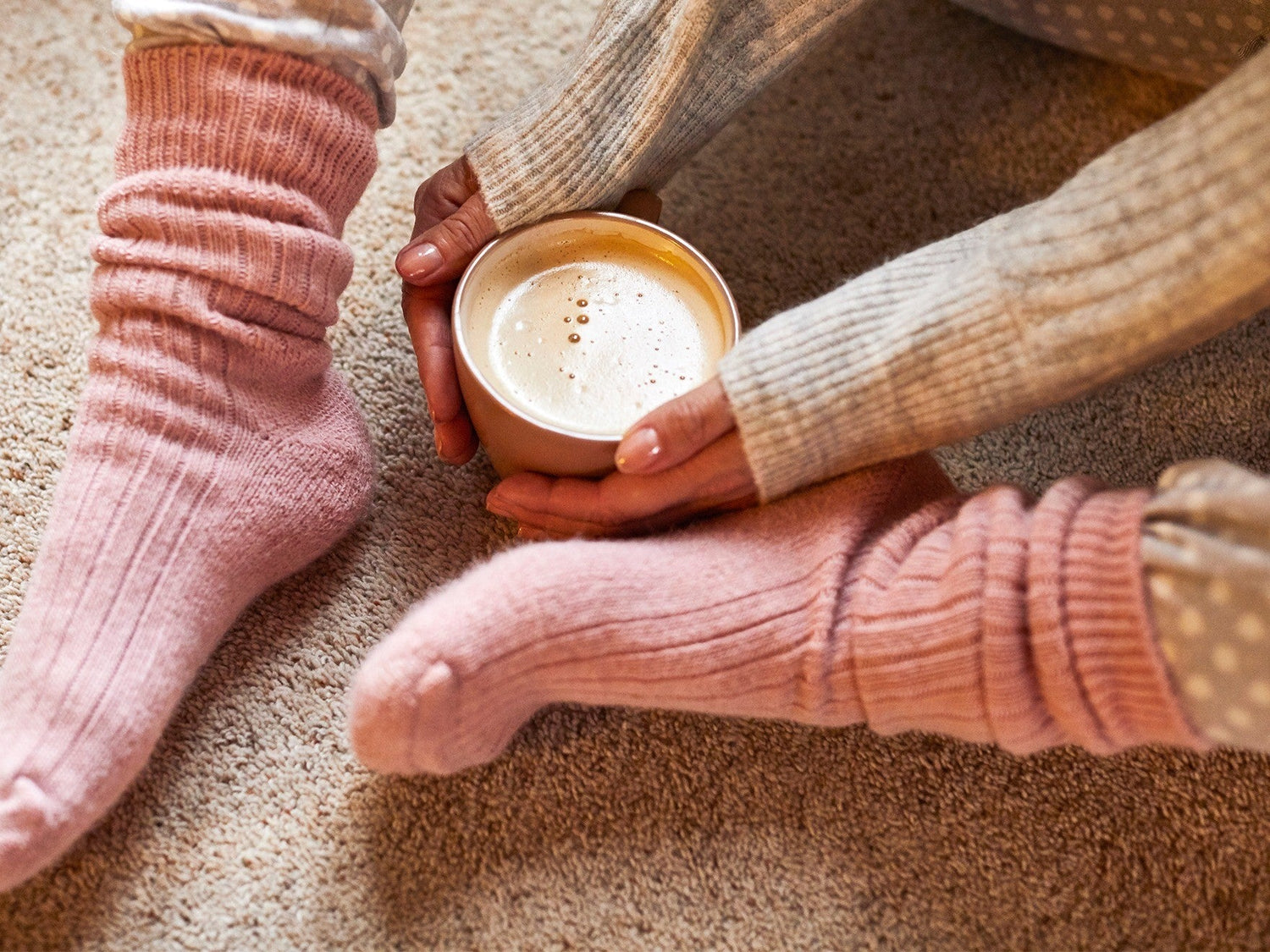Merino Socks Guide: Everything You Need to Know in 2025
Looking for the ultimate comfort and performance upgrade for your feet in 2025? Merino socks are rapidly becoming the go-to choice for those who value both luxury and function.
This guide will walk you through everything you need to know about merino socks—from their unique benefits and how they outperform alternatives, to tips on selecting the perfect pair, caring for them, and the latest trends shaping the market.
Discover why more people are making the switch to merino socks and learn how to make the smartest sock choices for every season and activity.
What Makes Merino Wool Unique?
Merino wool stands out as a game-changer in the world of comfort and performance. What sets Merino socks apart isn’t just marketing hype—it’s the science behind the fibers and a commitment to sustainability that’s hard to beat.
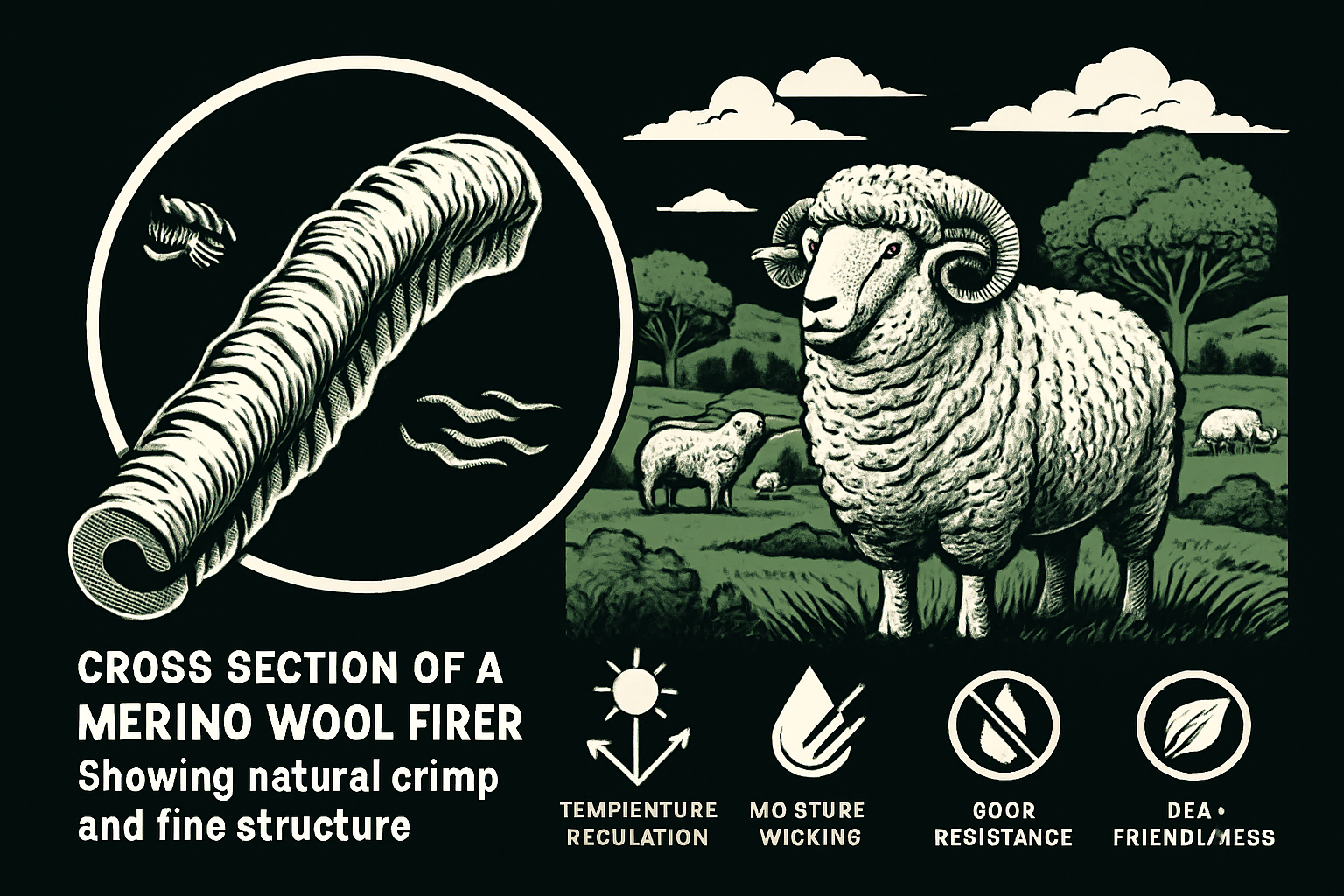
The Science Behind Merino Wool
Merino wool is harvested from Merino sheep, a breed renowned for producing exceptionally fine and soft fibers. Unlike traditional wool, Merino fibers are smoother and less likely to itch, making Merino socks a favorite for anyone seeking everyday comfort.
The secret lies in the fiber’s natural crimp and elasticity. This structure allows Merino socks to conform to your feet, providing a snug yet flexible fit. The unique crimp creates tiny air pockets, which trap heat in cold conditions and release excess warmth when temperatures rise. As a result, Merino socks keep your feet cool in summer and cozy in winter.
Breathability is another hallmark of Merino wool. The fibers wick moisture away from your skin, drawing sweat out to the surface where it can evaporate quickly. In performance tests, Merino socks consistently outperform cotton and synthetics by keeping feet dry and reducing the risk of blisters. In fact, Merino wool can absorb up to 30% of its own weight in moisture before even feeling wet.
Another standout feature is Merino’s antimicrobial properties. These natural defenses help minimize odor, allowing you to wear Merino socks for days without worrying about unpleasant smells. Lightweight yet surprisingly insulating, Merino socks are ideal for hiking, running, travel, and everyday use.
To sum it up, here’s how Merino socks compare to other materials:
| Feature | Merino Wool | Cotton | Synthetics |
|---|---|---|---|
| Moisture Wicking | Excellent | Poor | Good |
| Odor Resistance | High | Low | Low/Medium |
| Temperature Reg. | Superior | Low | Moderate |
| Comfort | Soft, itch-free | Soft, can chafe | Varies |
When you choose Merino socks, you’re investing in a blend of science and nature that delivers lasting comfort and performance.
Environmental and Ethical Considerations
Beyond comfort, Merino socks score high marks for sustainability. Merino wool is a renewable resource—sheep regrow their fleece each year—making it a smart choice for eco-conscious consumers. The fibers are also biodegradable, so Merino socks naturally break down at the end of their life instead of lingering in landfills.
Ethical sourcing is a growing concern in 2025. Look for Merino socks that carry certifications like the Responsible Wool Standard (RWS), which ensures animal welfare and responsible land management. Brands are increasingly transparent about their supply chains, highlighting eco-friendly farming and production methods in their marketing.
Thanks to Merino’s natural odor resistance, you can wear Merino socks multiple times before needing a wash. This not only saves water and energy but also extends the lifespan of each pair. Wool production itself typically uses less energy than manufacturing synthetic fibers, further reducing environmental impact. For a deeper dive into these topics, see this overview of the Environmental Impacts of Wool Textiles.
Major brands now feature eco-friendly Merino in their collections, reflecting the demand for greener choices. Choosing Merino socks means making a positive difference for both your feet and the planet.
Key Benefits of Merino Socks
When it comes to upgrading your everyday comfort, merino socks stand out as a game-changer. Their unique properties deliver a blend of softness, support, and advanced performance features that ordinary socks simply can’t match.
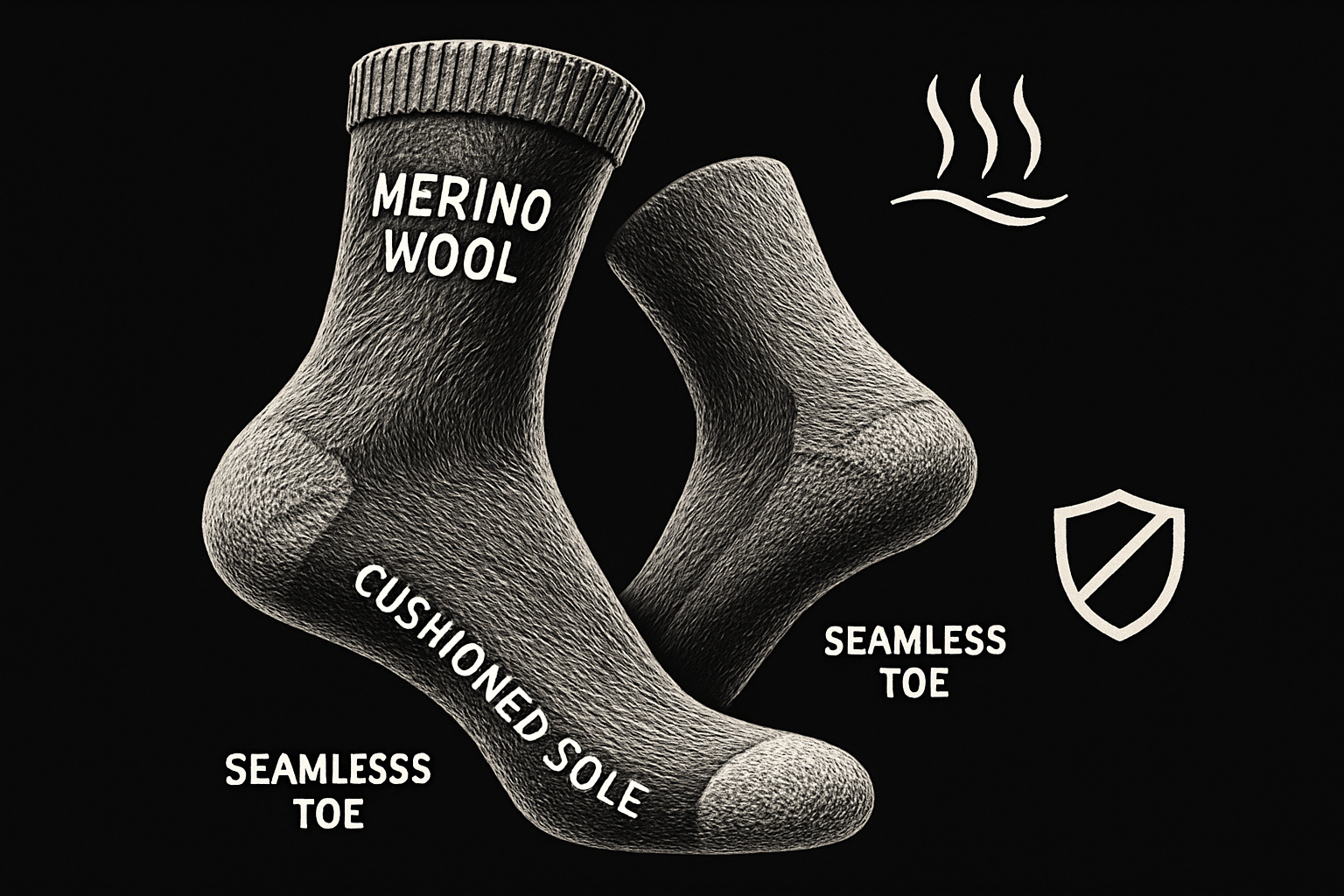
Comfort and Performance Advantages
Experience the soft, itch-free feel of merino socks from the very first wear. Unlike traditional wool, these socks use ultra-fine fibers that wrap your feet in gentle comfort. The natural elasticity and crimp in merino wool help the socks conform to your foot’s shape, offering a snug, supportive fit without tightness.
Every step feels lighter thanks to cushioned soles that absorb impact and reduce fatigue, making merino socks ideal for long days on your feet. Seamless toe designs help prevent friction and blisters, so you can say goodbye to annoying hot spots. Even after repeated washes, merino socks maintain their shape and plush feel.
Another standout feature is their quick-drying nature. Whether you’re trail running or traveling, merino socks dry fast, keeping your feet fresh and ready for action. Hikers and runners often report fewer blisters and hot spots when switching to merino socks, especially on multi-day adventures.
A key reason for their popularity is temperature regulation. Merino wool naturally keeps your feet cool in summer and warm in winter. Data shows that merino can absorb up to 30% of its weight in moisture before feeling damp, outperforming both cotton and synthetic materials. If you’re curious about what sets these socks apart, check out Why choose our socks for a detailed breakdown of their unique advantages.
Merino socks bring together comfort, durability, and versatility, making them a smart choice for daily wear, sports, or work.
Health and Hygiene
Merino socks also deliver impressive health and hygiene benefits. Their natural fibers are hypoallergenic, making them suitable for sensitive skin and those prone to irritation. Thanks to the fine diameter of merino wool fibers—typically 17 to 24 microns—these socks are gentle enough for even the most delicate feet.
Odor resistance is another big win. The antimicrobial properties of merino wool fight bacteria, allowing you to wear merino socks for several days without fear of unpleasant smells. This makes them perfect for travel, camping, or busy weeks when laundry isn’t a top priority.
Breathability is built into the structure of merino socks, helping to reduce moisture and lower the risk of fungal infections. Diabetic-friendly options are available, designed specifically to offer extra comfort and protection for sensitive feet.
In real-world use, many people with allergies or skin sensitivities find that merino socks reduce irritation and keep their feet healthier. With their blend of comfort, odor control, and breathability, merino socks are a practical upgrade for anyone prioritizing foot health.
How to Choose the Right Merino Socks in 2025
Selecting the ideal pair of merino socks in 2025 is much more than picking a color or pattern. The right choice depends on your activities, climate, personal comfort, and even the type of shoes you wear. With so many options available, understanding the key features can help you find merino socks that keep your feet happy all year round.
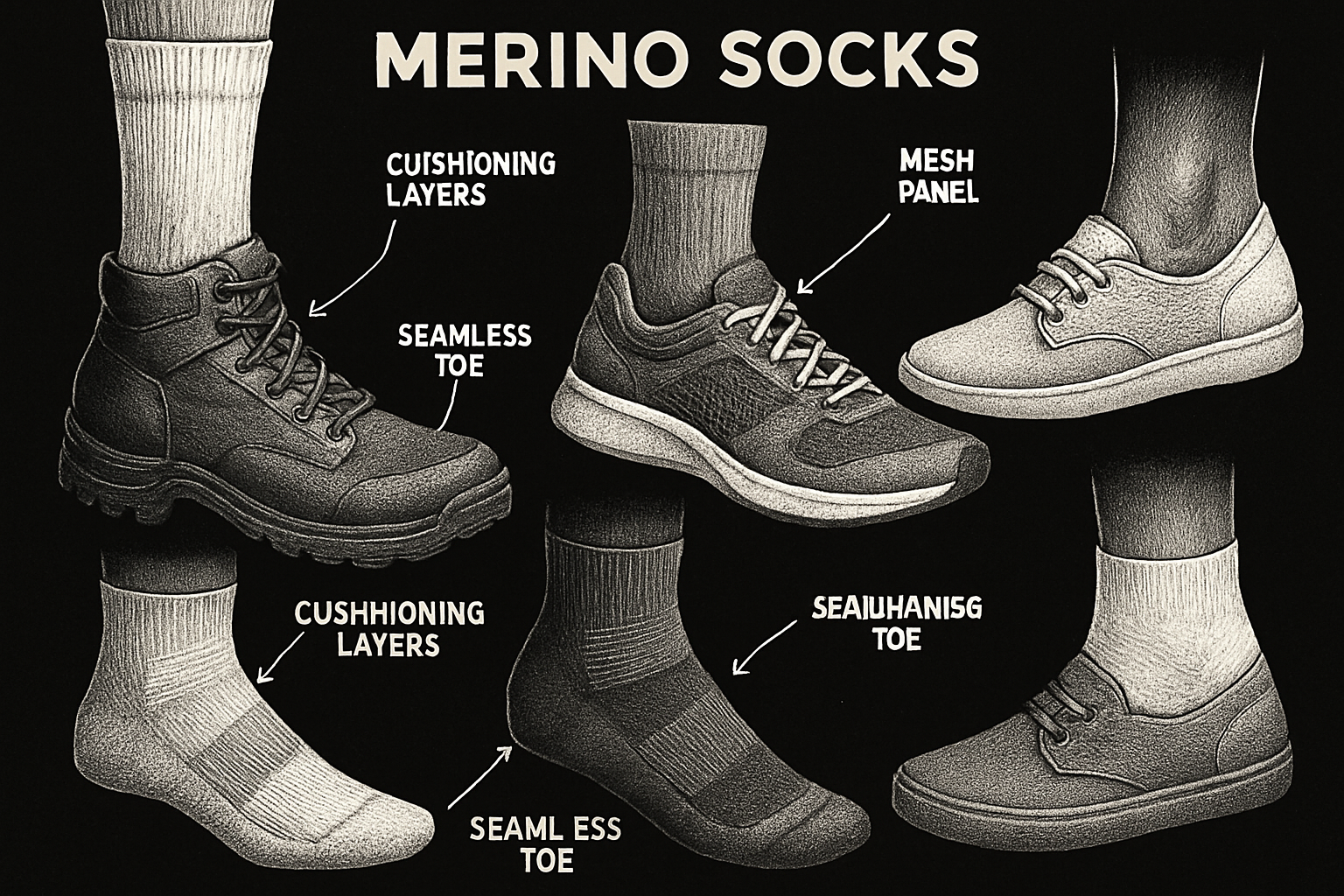
Understanding Sock Weights and Cushioning
Merino socks come in a range of weights and cushioning levels, each designed for specific needs. Choosing the right combination ensures optimal comfort and performance.
Sock Weights:
- Ultralight: Best for running, warm weather, or as a liner under heavier socks.
- Lightweight: Versatile for everyday wear, mild hikes, or travel.
- Midweight: Offers more warmth and cushioning for longer hikes, work, or chilly days.
- Heavyweight: Ideal for winter sports, mountaineering, or extremely cold conditions.
Cushioning Types:
- No Cushion: Minimal bulk, maximum breathability.
- Light Cushion: Extra comfort without overheating.
- Zone Cushion: Targeted support on high-impact areas.
- Full Cushion: Plush feel for maximum protection and warmth.
| Weight | Best Use | Cushion Options |
|---|---|---|
| Ultralight | Running, summer, liner | No/Light |
| Lightweight | Everyday, mild hikes | No/Light/Zone |
| Midweight | Hiking, work, cold | Zone/Full |
| Heavyweight | Winter, snow sports | Full |
For example, hikers often choose midweight, full cushion merino socks for long treks, while runners prefer ultralight or lightweight options to keep their feet cool and dry. The right balance of weight and cushioning in merino socks can make all the difference in comfort.
Sock Heights and Styles
The height and style of your merino socks play a major role in comfort and functionality. Different activities and footwear call for different sock profiles.
Popular Heights:
- No Show: Disappears inside trainers, perfect for athletic or casual shoes.
- Ankle: Sits just above the shoe line, great for running or gym workouts.
- Quarter: Covers the ankle, offering a touch more protection.
- Mid-Crew: Sits between ankle and crew, versatile for most uses.
- Crew: Classic height, protects lower leg—popular for hiking and work boots.
- Boot: Higher rise for added warmth and coverage in boots.
- Over-the-Calf: Maximum coverage for winter sports or dress wear.
Style Choices:
- Sport-specific designs for running, hiking, or skiing.
- Dressier options for the office.
- Everyday basics for comfort at home or on the go.
For instance, crew and boot height merino socks are favorites among hikers and workers, while no-show styles are perfect for trainers. Matching sock height to your footwear ensures your merino socks perform at their best.
Sizing and Fit
Getting the right size is crucial for merino socks. A poor fit can lead to bunching, blisters, or discomfort, undermining all the benefits merino socks offer. Most brands provide detailed size charts, with options for men, women, unisex, and even kids.
Size Ranges:
- Small, medium, large, extra-large
- Gender-specific and unisex sizing
- Kids and small-footed adult options
Accurate sizing helps merino socks stay snug, preventing friction and slippage. Brands like Fox River offer extensive size and fit selections to cover every need. For guidance, consult a dedicated sock size and fit guide to ensure your merino socks fit perfectly every time.
Specialized Features and Technologies
Modern merino socks are packed with advanced features that enhance performance and comfort. Look for these key technologies when choosing your next pair:
- Seamless Toe: Reduces friction, preventing blisters.
- Compression Fit: Boosts circulation and support, ideal for long days on your feet.
- Breathable Mesh Panels: Increases ventilation, keeping feet cool.
- Reinforced Heel/Toe: Prolongs sock life in high-wear zones.
- Proprietary Technologies: Ultimax® for moisture management, SynchroKnit® for a custom fit, INgenius™ for layered comfort.
Special features like gentle grip cuffs and diabetic-friendly designs make merino socks accessible for sensitive feet. Wigwam’s Ultimax® technology, for example, keeps sweat under control even on intense hikes. Advanced features ensure your merino socks go the distance, whatever the activity.
Colour and Style Choices
Merino socks aren’t just about function—they’re a fashion statement, too. Today’s options range from classic neutrals to vibrant patterns, letting you express your style while enjoying all the benefits of merino socks.
Colour Options:
- Black, blue, grey, pink, purple, multicolor, and more
Designs:
- Solid, striped, polka dot, and artistic patterns
Function Meets Fashion:
- Bright colors for athletic flair
- Subtle tones for formal or work settings
- Fun patterns for everyday wear
The selection of merino socks in 2025 is broader than ever, catering to every taste and occasion. Whether you want understated sophistication or a pop of personality, there’s a pair of merino socks that fits your style.
Merino Socks vs. Other Materials: A Comparison
When choosing the right socks, it’s crucial to understand how merino socks stack up against other materials. Let’s explore how they compare to cotton, synthetic fibers, and other natural options, so you can make the best choice for your feet.
Here’s a quick side-by-side comparison:
| Feature | Merino Socks | Cotton Socks | Synthetic Socks | Other Natural Fibers |
|---|---|---|---|---|
| Moisture Management | Excellent | Poor | Good | Varies (Alpaca: Good) |
| Odor Resistance | High | Low | Low–Medium | High (Bamboo: Excellent) |
| Temp. Regulation | Excellent | Poor | Moderate | Varies (Cashmere: Good) |
| Durability | High | Medium | High | Medium–High |
| Comfort | Soft, itch-free | Soft, can chafe | Varies | Soft (Alpaca, Cashmere) |
| Eco-friendliness | Renewable, biodegradable | Biodegradable | Not biodegradable | Biodegradable |
Curious to see the full range of merino socks available? Explore the Merino wool socks collection for options spanning every activity and preference.
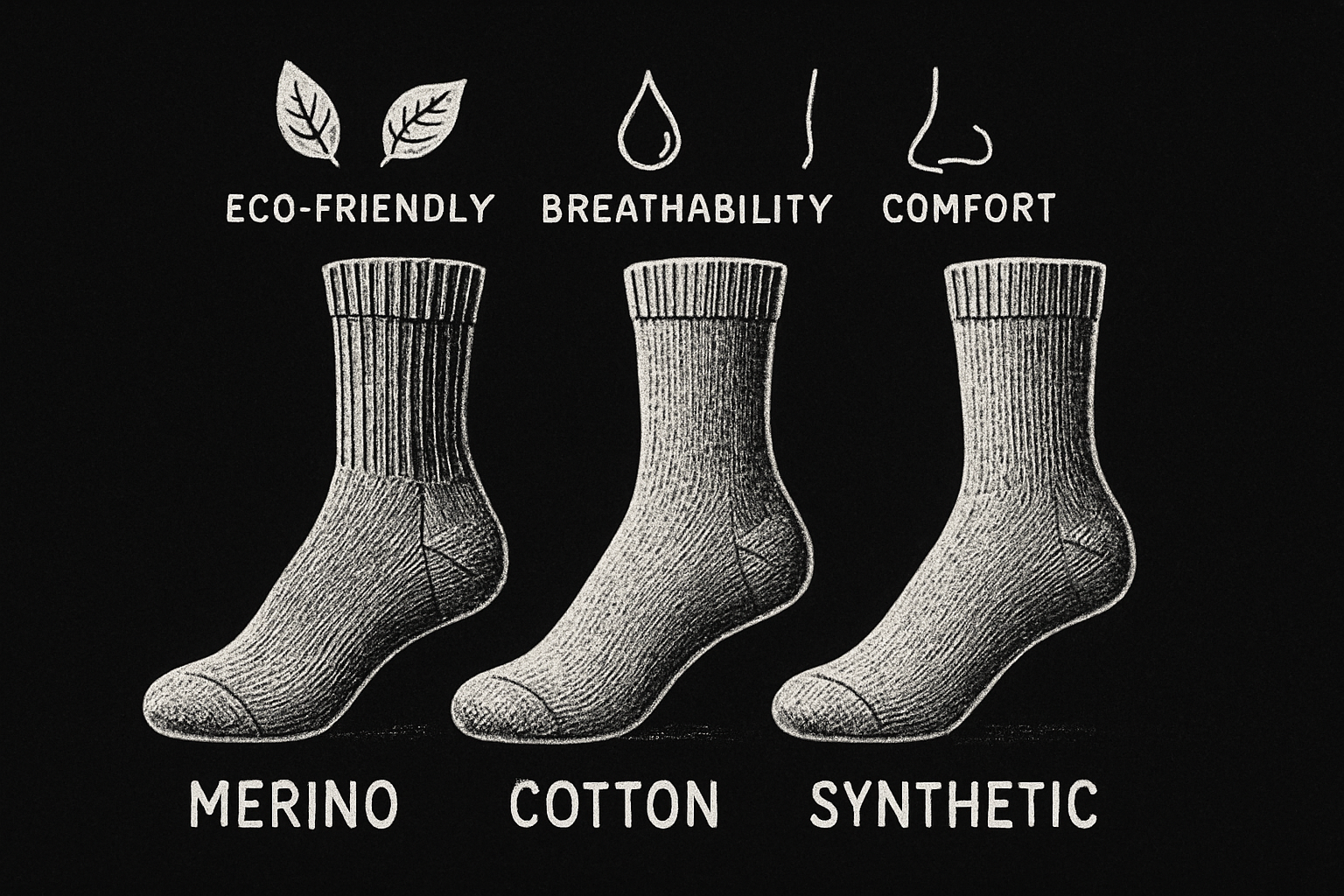
Merino vs. Cotton
Merino socks truly shine when compared to cotton. While cotton socks are soft and familiar, they absorb moisture and dry slowly, which can lead to uncomfortable, damp feet and more blisters. Merino socks, on the other hand, wick moisture away and keep your feet dry, significantly reducing the risk of blisters.
Another advantage is odor resistance. Cotton tends to retain smells after just a day’s wear, but merino socks can go multiple days without noticeable odor, making them perfect for travel and long hikes. Hikers and athletes often report that merino socks help them avoid hot spots and blisters, especially during extended activities.
If you want a sock that performs in all seasons and keeps your feet feeling fresh, merino socks are a clear winner over cotton.
Merino vs. Synthetic Fibers
Synthetic socks, like those made from polyester or nylon, are popular for their durability and quick-drying properties. However, they often lack the natural breathability and temperature regulation that merino socks offer. While synthetics are less expensive and dry fast, they can trap odors over time and may not feel as comfortable against sensitive skin.
Merino socks stand out because they balance comfort, breathability, and eco-friendliness. Some brands blend merino with synthetics for extra durability, but pure merino socks are the top choice for those who prioritize softness, odor resistance, and a natural feel.
Athletes who have tried both often find themselves returning to merino socks for their superior foot climate and comfort.
Merino vs. Other Natural Fibers (Alpaca, Bamboo, Cashmere)
Other natural fiber socks offer unique benefits. Alpaca socks are warmer and softer than merino socks but may lack elasticity and long-term shape retention. Bamboo socks excel in breathability and have natural antibacterial properties, but they’re usually less insulating and not as durable as merino socks.
Cashmere socks are luxurious and incredibly soft, yet they tend to wear out quickly and don’t offer the same performance features as merino socks. The beauty of merino socks is their ability to combine comfort, performance, and durability—all in one package.
Brands like The Cambridge Sock Company offer selections in merino, alpaca, and bamboo, making it easy to find the right fit for your needs. For most, merino socks provide the best all-around option for daily wear, travel, and outdoor adventures.
Caring for Your Merino Socks
Taking care of your merino socks is key if you want them to last and perform at their best. Unlike regular socks, merino socks require some special attention, but the payoff is comfort and durability for years. Let’s break down the best practices for washing, storing, and avoiding common mistakes.
Washing and Drying Guidelines
Merino socks stay soft and resilient when washed the right way. Always use a mild detergent and avoid bleach or fabric softeners, which can damage the delicate fibers. Stick to cold or lukewarm water and choose a gentle machine cycle or hand wash if possible.
For drying, lay your merino socks flat to air dry. High heat from a dryer can shrink or weaken the wool, so skip the tumble dry. Many brands recommend turning your socks inside out before washing. This helps protect the outer fibers and keeps your socks looking new.
If you’d like more in-depth tips, check out this helpful Caring for natural fibre socks guide for extra advice. Following these steps will keep your merino socks performing at their peak.
- Use a mild, wool-friendly detergent.
- Wash in cold or lukewarm water.
- Avoid bleach and fabric softeners.
- Turn socks inside out before washing.
- Air dry flat, never tumble dry.
Storage and Longevity Tips
Proper storage helps your merino socks maintain their shape and quality. Store your socks in a cool, dry place, away from areas where moths might lurk. If you rotate your socks, you’ll ensure each pair wears evenly and lasts longer.
A mesh washing bag can prevent snags and stretching in the wash. This is especially helpful if you machine wash your socks. Keeping merino socks in good condition means you’ll enjoy their comfort and performance for many seasons.
- Store socks folded, not bunched, in a drawer.
- Avoid damp or humid storage spaces.
- Use a mesh bag for machine washing.
- Rotate pairs so each gets equal use.
With just a little attention, your merino socks can outlast ordinary socks by years.
Common Mistakes to Avoid
It’s easy to make mistakes when caring for merino socks, but a few simple habits can save you trouble. Never wash them in hot water or use harsh chemicals, as these can cause shrinking or breakage. Avoid wringing or twisting the socks; instead, gently squeeze out excess water after washing.
Here’s a quick checklist of what not to do:
- Don’t use hot water or harsh detergents.
- Never wring or twist—press gently to remove water.
- Avoid hanging socks, which can stretch the fibers.
- Don’t overload the wash, which can cause friction and damage.
By steering clear of these pitfalls, your merino socks will stay comfortable, odor-free, and ready for every adventure.
The Latest Trends and Innovations in Merino Socks for 2025
In 2025, merino socks are stepping into the spotlight with exciting innovations and a stronger commitment to sustainability. Whether you're a seasoned outdoor enthusiast or simply love all-day comfort, the latest trends are reshaping how we think about performance and style.
Sustainable and Ethical Production
Sustainability is front and center in the world of merino socks. More brands are adopting eco-friendly practices, such as regenerative wool farming, to minimize environmental impact and improve animal welfare. Certifications like the Responsible Wool Standard (RWS) are now widely sought after by conscious consumers.
Transparency is also gaining traction, with brands openly sharing sourcing and production details. Fewer washes are needed thanks to merino's natural odor resistance, further reducing water and energy usage. If you're curious about the future of sustainable wool, explore Regenerative Wool Practices for deeper insights.
Advanced Sock Technologies
Technological innovation is redefining merino socks. New knitting techniques, such as SynchroKnit® and INgenius™, deliver improved fit, targeted compression, and greater durability. Hybrid blends featuring recycled fibers are emerging, offering a balance between sustainability and performance.
You’ll also find enhanced moisture management, seamless toes, and reinforced zones for high-wear areas. These advancements make merino socks more versatile and comfortable than ever, catering to runners, hikers, and everyday users alike.
Expanding Style and Functionality
Gone are the days when merino socks were just for hiking boots. In 2025, there’s a style for every occasion and personality. Brands now offer a wide array of lengths, colors, and patterns—think bold stripes, artistic prints, and even collaborations with designers.
Functionality is expanding, too. Expect options designed for specific sports, work environments, and casual wear. No matter your routine, there’s a pair of merino socks to match your needs and keep your feet feeling great.
Market Data and Consumer Preferences
The market for merino socks is booming as awareness of comfort and sustainability grows. Recent Merino Wool Socks Market Analysis highlights that consumers value durability, odor resistance, and eco-friendly sourcing above all else.
Reviews consistently mention the superior feel and long-lasting performance of merino socks compared to alternatives. As more shoppers prioritize quality and ethical practices, expect continued growth and innovation in this category.
Frequently Asked Questions About Merino Socks
Curious about merino socks? Here are answers to the most common questions, helping you make informed choices for comfort, performance, and sustainability.
How long do merino socks last with regular use?
Merino socks are known for their durability. With proper care and regular rotation, they often last one to two years or more, even with frequent wear. Many users find the investment pays off through reduced replacement costs.
Are merino socks suitable for people with allergies or sensitive skin?
Absolutely. Merino socks are naturally hypoallergenic and have fine fibers, making them gentle on sensitive skin. Many brands design socks specifically for those with allergies, minimizing irritation and discomfort.
Can you wear merino socks year-round, including summer?
Yes! Thanks to their temperature-regulating properties, merino socks keep feet cool in summer and warm in winter. Their breathability and moisture-wicking abilities make them a smart choice for all seasons.
Do merino socks shrink after washing?
If you follow care instructions—wash in cold or lukewarm water and air dry—merino socks retain their shape and size. Avoiding high heat and harsh detergents prevents unwanted shrinkage.
Are merino socks worth the higher price point?
Many people consider merino socks a valuable investment. They offer superior comfort, durability, and odor resistance, often outlasting cheaper alternatives. Their performance justifies the price for most users.
How do I know if my merino socks are ethically sourced?
Look for certifications like the Responsible Wool Standard (RWS) and transparent sourcing information from brands. To understand the environmental impact of wool textiles, consider this Life Cycle Assessment of Woolen Undershirt, which offers insights relevant to merino socks.
What are the best uses and activities for merino socks?
Merino socks excel in hiking, running, travel, work, and everyday wear. Their cushioning, breathability, and odor resistance make them versatile for almost any activity.
Can I wear merino socks for multiple days without washing?
Yes, you can. Their natural antimicrobial properties help prevent odor, making merino socks ideal for travel, camping, or busy routines when laundry isn’t always possible.
